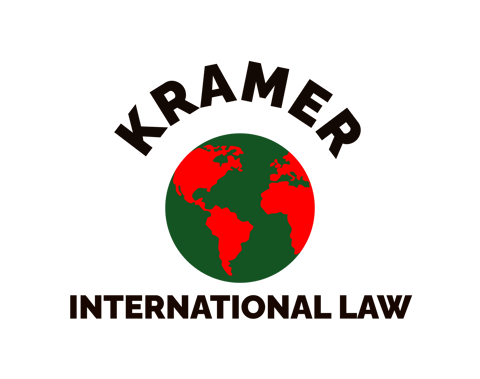Understanding the Key Differences Between Incoterms® CIF and FOB
April 7, 2025
Randy S. Kramer


Understanding the Key Differences Between Incoterms® CIF and FOB
Incoterms® (International Commercial Terms) are rules of the International Chamber of Commerce (ICC) defining buyer and seller responsibilities under international shipping agreements, covering such areas as shipping, insurance, and taxes.
There are essential differences between the Incoterms CIF (Cost, Insurance, and Freight) and FOB (Free On Board).
𝗗𝗲𝗳𝗶𝗻𝗶𝘁𝗶𝗼𝗻 𝗼𝗳 𝗖𝗜𝗙 (𝗖𝗼𝘀𝘁, 𝗜𝗻𝘀𝘂𝗿𝗮𝗻𝗰𝗲, 𝗮𝗻𝗱 𝗙𝗿𝗲𝗶𝗴𝗵𝘁)
CIF means the seller handles the transportation of the goods, pays for insurance, and covers shipping costs until the goods arrive at the destination port. The seller is liable for any damage or loss during transit. Once the goods reach the port, the buyer takes over responsibility.
𝗔𝗱𝘃𝗮𝗻𝘁𝗮𝗴𝗲𝘀 𝗼𝗳 𝗖𝗜𝗙 𝗳𝗼𝗿 𝘁𝗵𝗲 𝗦𝗲𝗹𝗹𝗲𝗿
- Sellers may set higher prices under CIF.
- Sellers can incorporate their logistical and insurance costs into the total prices they set.
𝗔𝗱𝘃𝗮𝗻𝘁𝗮𝗴𝗲𝘀 𝗼𝗳 𝗖𝗜𝗙 𝗳𝗼𝗿 𝘁𝗵𝗲 𝗕𝘂𝘆𝗲𝗿
- CIF is convenient to the buyer.
- The seller takes care of all logistics, insurance, and freight, which translates to reduced responsibility for the buyer.
𝗗𝗲𝗳𝗶𝗻𝗶𝘁𝗶𝗼𝗻 𝗼𝗳 𝗙𝗢𝗕 (𝗙𝗿𝗲𝗲 𝗼𝗻 𝗕𝗼𝗮𝗿𝗱)
FOB denotes when the buyer takes ownership and assumes the risk for goods in transit. With FOB, the seller covers the costs and logistics until the goods are loaded onto the shipping vessel at the port of shipment. This encompasses export packaging, documentation and customs clearance. Once the goods are on the vessel, the buyer takes on all subsequent costs and risks related to the shipment.
𝗔𝗱𝘃𝗮𝗻𝘁𝗮𝗴𝗲𝘀 𝗼𝗳 𝗙𝗢𝗕 𝗳𝗼𝗿 𝘁𝗵𝗲 𝗦𝗲𝗹𝗹𝗲𝗿
- Responsibility ends once the goods are loaded onto the vessel, establishing a clear risk transfer.
- The seller oversees the export process, ensuring adherence to applicable regulations.
𝗔𝗱𝘃𝗮𝗻𝘁𝗮𝗴𝗲𝘀 𝗼𝗳 𝗙𝗢𝗕 𝗳𝗼𝗿 𝘁𝗵𝗲 𝗕𝘂𝘆𝗲𝗿
- The buyer assumes control once the goods are loaded onto the vessel, allowing for the selection of carriers and routes.
- FOB provides flexibility in overseeing the primary shipping leg, resulting in potential reduction of costs and improved logistical arrangements.
𝗕𝗿𝗲𝗮𝗸𝗱𝗼𝘄𝗻 𝗼𝗳 𝗥𝗲𝘀𝗽𝗼𝗻𝘀𝗶𝗯𝗶𝗹𝗶𝘁𝘆 𝗮𝘀 𝗕𝗲𝘁𝘄𝗲𝗲𝗻 𝗖𝗜𝗙 𝗮𝗻𝗱 𝗙𝗢𝗕
𝗧𝗿𝗮𝗻𝘀𝗽𝗼𝗿𝘁𝗮𝘁𝗶𝗼𝗻 𝘁𝗼 𝗣𝗼𝗿𝘁
CIF – Seller
FOB – Seller
𝗟𝗼𝗮𝗱𝗶𝗻𝗴 𝗼𝗻𝘁𝗼 𝗩𝗲𝘀𝘀𝗲𝗹
CIF – Seller
FOB – Seller
𝗜𝗻𝘀𝘂𝗿𝗮𝗻𝗰𝗲 𝗖𝗼𝘀𝘁𝘀
CIF – Seller
FOB – Buyer
𝗙𝗿𝗲𝗶𝗴𝗵𝘁 𝗖𝗼𝘀𝘁𝘀
CIF – Seller
FOB – Buyer
𝗥𝗶𝘀𝗸 𝗗𝘂𝗿𝗶𝗻𝗴 𝗧𝗿𝗮𝗻𝘀𝗶𝘁
CIF – Seller
FOB – Buyer
𝗖𝘂𝘀𝘁𝗼𝗺𝘀 𝗗𝘂𝘁𝗶𝗲𝘀 – 𝗢𝗿𝗶𝗴𝗶𝗻
CIF – Seller
FOB – Seller
𝗖𝘂𝘀𝘁𝗼𝗺𝘀 𝗗𝘂𝘁𝗶𝗲𝘀 – 𝗗𝗲𝘀𝘁𝗶𝗻𝗮𝘁𝗶𝗼𝗻
CIF – Buyer
FOB – Buyer
𝗨𝗻𝗹𝗼𝗮𝗱𝗶𝗻𝗴 – 𝗗𝗲𝘀𝘁𝗶𝗻𝗮𝘁𝗶𝗼𝗻
CIF – Buyer
FOB – Buyer
𝗧𝗿𝗮𝗻𝘀𝗽𝗼𝗿𝘁𝗮𝘁𝗶𝗼𝗻 𝗳𝗿𝗼𝗺 𝗗𝗲𝘀𝘁𝗶𝗻𝗮𝘁𝗶𝗼𝗻 𝗣𝗼𝗿𝘁
CIF – Buyer
FOB – Buyer
International Business Law Firm
Providing international business law services respecting the law of the US, Canada, and the UK
Serving startups, established small and midsize businesses, and investors
TO CONTACT US:
E: info@kramerintlaw.com
T (US): + 1.347.588.4060, Ext. 1010
© 2025. All rights reserved.


T (Can): + 1.514.470.0717, Ext. 1010
